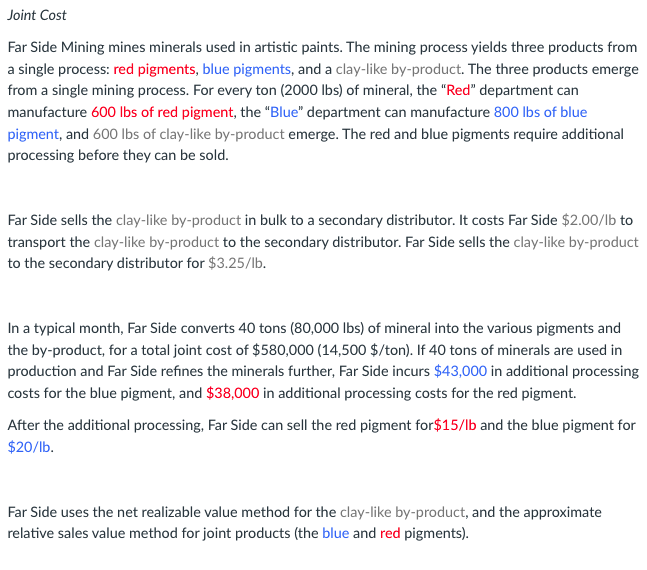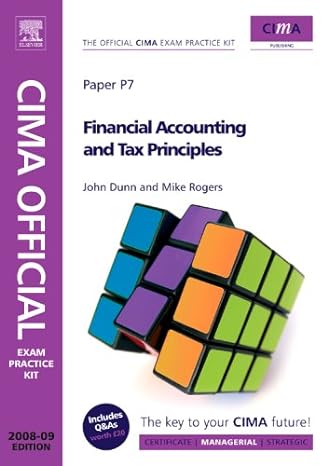Question
Please do your own work. These questions have been posted on Chegg before but don't have complete answers. Any answers simply copied and pasted from
Please do your own work. These questions have been posted on Chegg before but don't have complete answers. Any answers simply copied and pasted from previous answers will be reported.

1. If Far Side has the opportunity to sell the blue pigment at the split-off point (i.e. before incurring the additional costs required to process the blue pigment further) at a price of $18 per lb should Far Side process the pigment further or sell it at the split-off point?
a. process the pigment further
b. sell at the split-off point
c. both provide the same level of profit
2. Would your answer to the previous question change if the joint costs were only allocated to the red and blue pigments (i.e. not Clay)?
a. no
b. yes
Joint Cost Far Side Mining mines minerals used in artistic paints. The mining process yields three products from a single process: red pigments, blue pigments, and a clay-like by-product. The three products emerge from a single mining process. For every ton (2000 lbs) of mineral, the "Red" department can manufacture 600 lbs of red pigment, the "Blue" department can manufacture 800 lbs of blue pigment, and 600 lbs of clay-like by-product emerge. The red and blue pigments require additional processing before they can be sold. Far Side sells the clay-like by-product in bulk to a secondary distributor. It costs Far Side $2.00/lb to transport the clay-like by-product to the secondary distributor. Far Side sells the clay-like by-product to the secondary distributor for $3.25/lb. In a typical month, Far Side converts 40 tons (80,000 lbs) of mineral into the various pigments and the by-product, for a total joint cost of $580,000 (14,500 $/ton). If 40 tons of minerals are used in production and Far Side refines the minerals further, Far Side incurs $43,000 in additional processing costs for the blue pigment, and $38,000 in additional processing costs for the red pigment. After the additional processing, Far Side can sell the red pigment for$15/lb and the blue pigment for $20/lb. Far Side uses the net realizable value method for the clay-like by-product, and the approximate relative sales value method for joint products (the blue and red pigments)
Step by Step Solution
There are 3 Steps involved in it
Step: 1

Get Instant Access to Expert-Tailored Solutions
See step-by-step solutions with expert insights and AI powered tools for academic success
Step: 2

Step: 3

Ace Your Homework with AI
Get the answers you need in no time with our AI-driven, step-by-step assistance
Get Started


